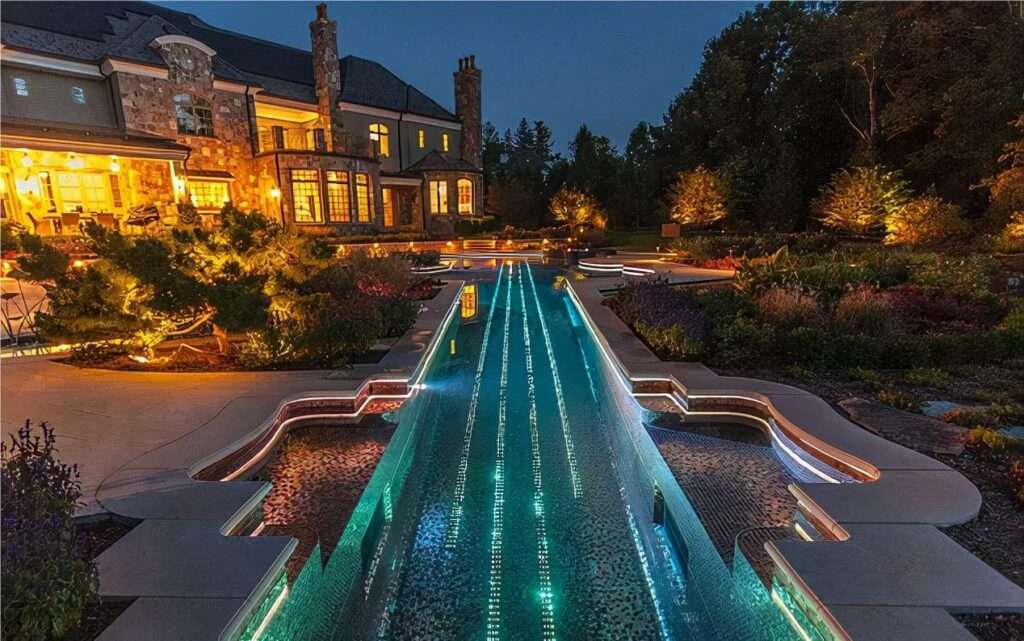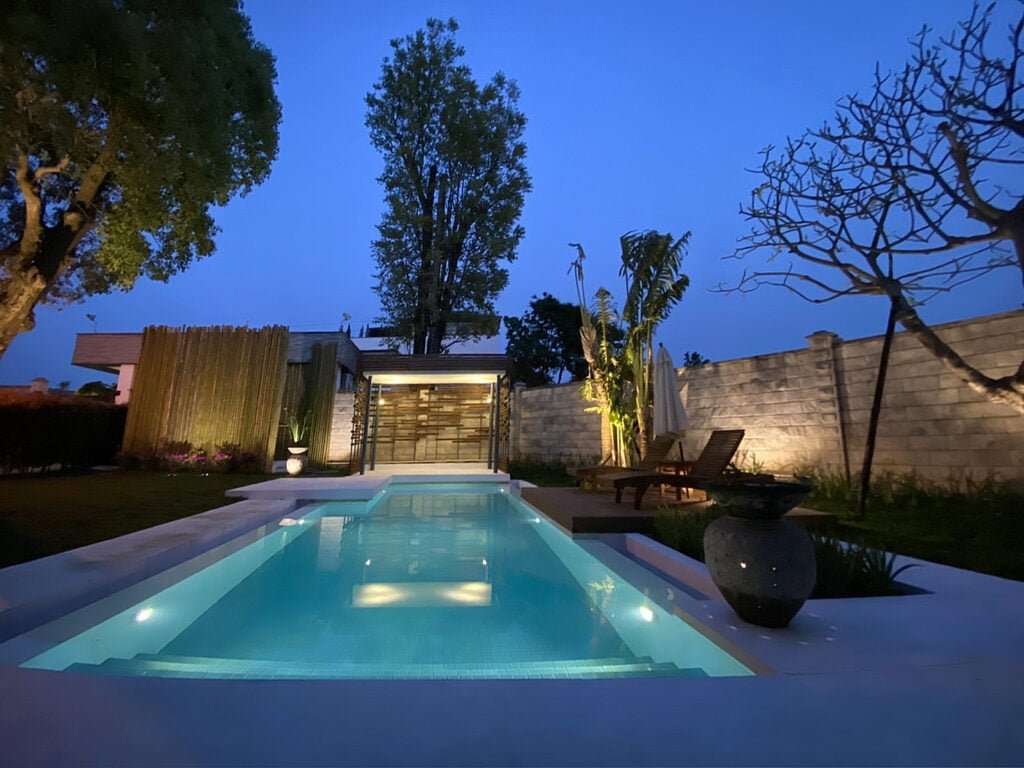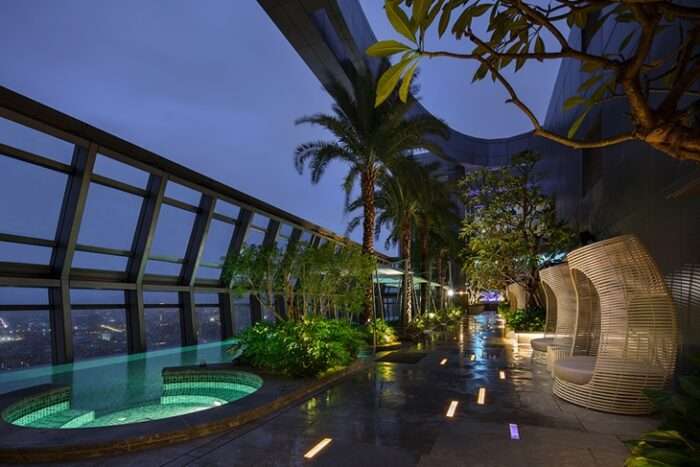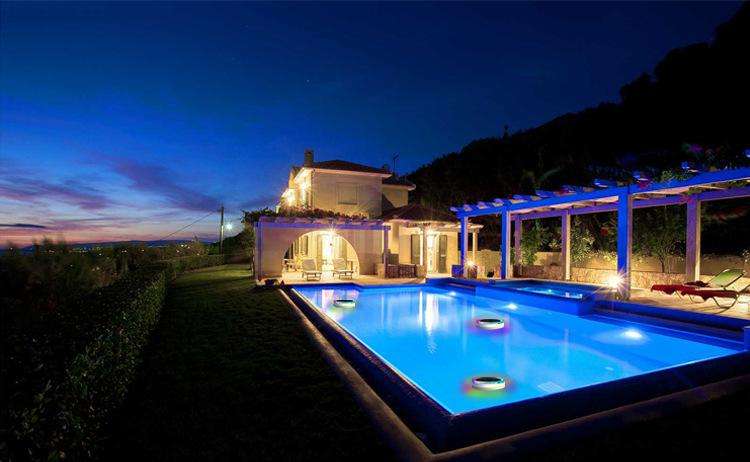Contact us for quotation
Let's have a chat
Let's have a chat
Introducing a swimming pool is one of the most exciting additions to any home. It’s not just about the refreshing dips you can take whenever you wish but also about the vibrant pool parties you can host. The aesthetic transformation it brings to a house’s appearance is undeniably striking.
Nonetheless, creating a captivating swimming pool goes beyond just its construction. Its charm can be diminished if you lack adequate lighting for nighttime swims. A poorly lit pool may also not enhance your home’s overall aesthetics as one might think.
If you aim to elevate your swimming pool’s allure, the key lies in the proper lighting. This enhancement doesn’t require a massive investment but can transform even the most ordinary collections into visual delights. Are you wondering how to achieve this? This guide has got you covered.

Swimming pool lighting encompasses the LEDs, bulbs, or other light sources installed underwater or around the pool’s perimeter. This lighting enhances the pool’s beauty and functionality, letting you enjoy nighttime swims, which the veil of darkness might otherwise hinder. Venturing into a dark pool can be risky, potentially leading to accidents and unwanted hospital visits.
Additionally, the illumination from these lights makes pool moments even more enjoyable. Think of late-night hangouts with friends or sipping a drink by the pool, all in the glow of soft lighting. Plus, it offers that Instagram-ready setting that many crave today.
Diverse lighting options are available for your pool, each with pros and cons. Let’s delve into them.
In the past, Halogen lights were the go-to choice for pool lighting due to their brilliant luminance. They outshine typical bulbs in brightness and come with a pocket-friendly price tag, making them an ideal choice for illuminating expansive pools. Additionally, their efficiency supersedes that of traditional bulbs.
However, with the advent of LEDs, Halogens have taken a backseat. While Halogen lights have an upfront cost advantage, LEDs prove more economical in the long run. LEDs typically consume about 80% less energy and have a lifespan of at least five times that of Halogen lights. Also, Halogens can heat up, which might unexpectedly warm the pool water, catching swimmers off guard.
Using a pliable fiber composed of either glass or plastic, called optical fiber, these lights efficiently transmit light from a single source to a different location. A significant advantage of this form of lighting is the ease of maintenance—you don’t have to access the underside of the pool to change a bulb. Instead, replace the bulb at the primary source. Additionally, since the lights aren’t placed beneath the collection, there’s no need for electrical wiring near the water. For those seeking advanced features, innovative light options allow adjustments in brightness, color, and even blink patterns, making for an impressive setting during pool parties.
One downside is that due to the light traveling a significant distance from its source, it might appear dimmer compared to other lights. Moreover, the specific bulbs required are less long-lasting and pricier, leading to more frequent replacements and increased costs.
Rather than being a replacement, solar pool lights complement other lighting solutions, adding a fun atmosphere. They’re particularly striking during pool parties with friends. The standout feature of these lights is their energy efficiency. No matter how many you install, your energy bills won’t skyrocket. A wide range of solar pool lights are available in the market, boasting various sizes, shapes, and hues.
However, there are limitations. Solar pool lights aren’t suited for continuous use as they may not be bright enough to illuminate the entire pool. Moreover, an excessive number of these lights might hinder the swimming experience.

While various pool lighting options are available, LED lights stand out for their efficiency and versatility. These lights are not only cost-saving and energy-efficient but also come in diverse shapes, sizes, and hues. LEDs are the go-to choice for pool illumination. Modern LED lights even offer smartphone-controlled color changes. Additionally, battery-powered LED variants eliminate concerns about electrical setups.
Setting up LED lights for your pool is straightforward, negating the need for expert intervention. Arm yourself with essential tools and follow the instructions below:

Using LED lights for your swimming pool comes with a plethora of advantages. While we’ve touched on some previously, here’s a comprehensive rundown:

Understanding the advantages of LEDs probably has you thinking about integrating them into your pool area. With many options available in the market, it can be overwhelming. Knowing what to look for is the key to navigating this variety. Here are the primary criteria you should focus on:
LED lighting is the top choice for pool illumination, not only for its cost and energy efficiency but also for superior light quality. Although initial costs might be higher, the benefits over time make it worthwhile. LEDs emit minimal heat, reducing the risks of injury and unwanted pool warming. When selecting LEDs, you must consider your needs, pool dimensions, and the product’s specific rating for pool use.
At MyLikeLed, we craft premium LED strips and LED neon flex. Our offerings undergo rigorous testing in advanced labs, ensuring unmatched quality. Plus, we provide bespoke solutions for our LED products. For top-tier LED strips and neon flex, reach out to MyLikeLed immediately!
We understand that every project is unique. That’s why we offer tailored LED strip solutions to meet your specific requirements.
Copyright © 2024 – My Like Led All rights reserved.
Let's have a chat